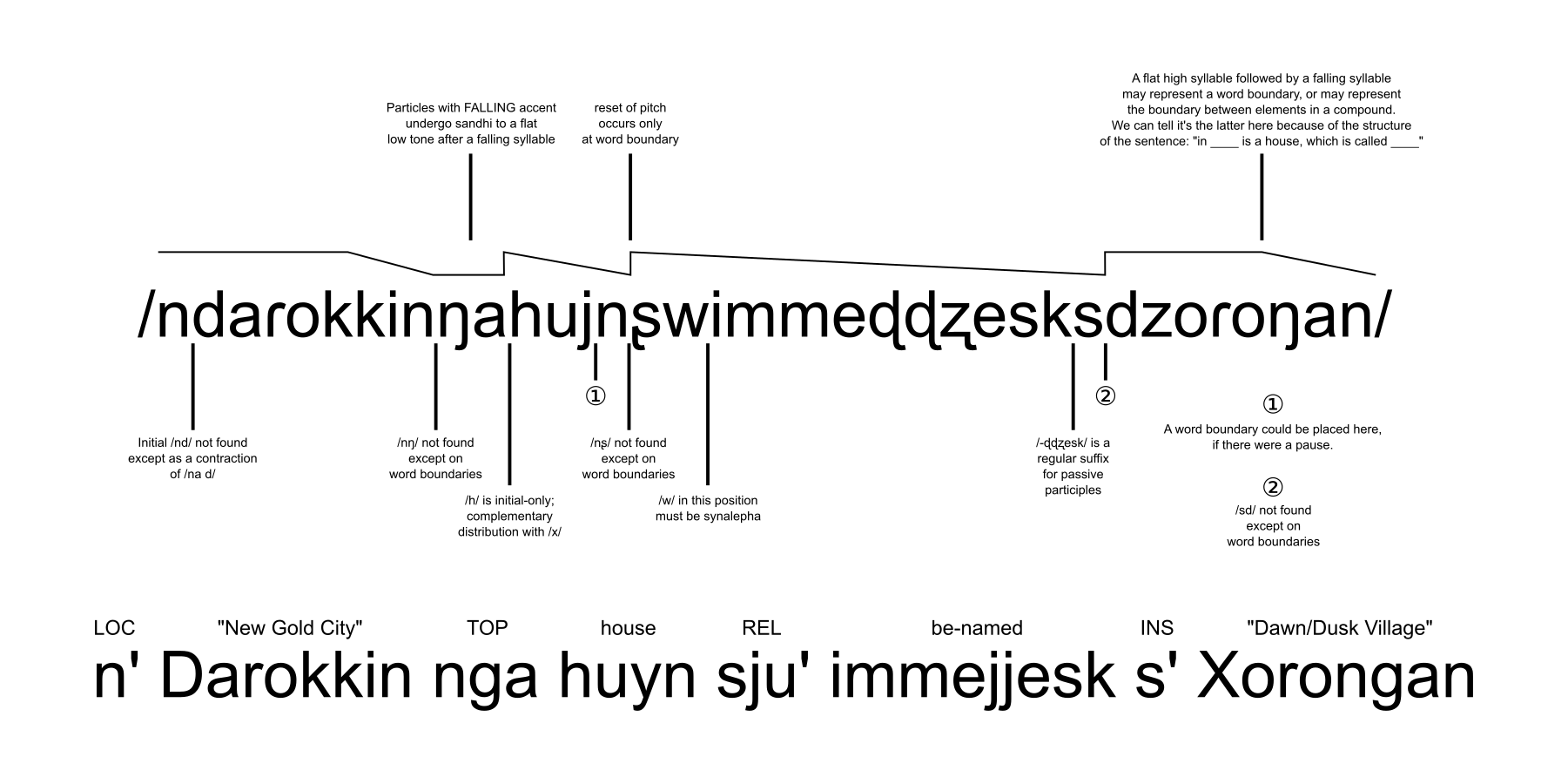The main idea behind this language is to become evolutionary food for other languages of my conworld. As such I'll probably never flesh it out completely, only the necessary to make its descendants feel a bit more natural.
Constructive criticism is welcome.
Context and basic info
The conworld I'm building has three classical languages, spoken 2~3 millenniums before the conworld present: Old Sirtki, Classical Tarune, and Mäkşna. And scholars in the conworld present are reconstructing their common ancestor, that they call "Proto-Sitama".
What I'm sharing here, however is none of their fancy reconstructions. It's the phonology of the language as it was spoken 7 millenniums before the conworld present. Its native name was /kʲær.mi.'zɑst/, or roughly "what we speak"; the language itself had no written version but it'll be romanised here as ⟨Cjermizást⟩.
Its native speakers were a semi-nomadic people, who lived mostly of livestock herding. They'd stay in a region with their herds, collect local fruits and vegetables, and then migrate for more suitable pasture as their animals required.
It was quite a departure from the lifestyle of their star travelling ancestors, who were born in a highly industrialised society in another planet.
Grammar tidbits
Grammar-wise, Cjermizást was heavily agglutinative, with an absolutive-ergative alignment and Suffixaufnahme. So typically you'd see few long polymorphemic words per sentence. Those morphemes don't always "stack" nicely together, so you often see phonemes being elided, mutated, or added to the word.
Consonants
| Manner \ Set |
Hard |
Soft |
| Nasals |
/m n/ |
/mʲ ɲ/ |
| Voiceless stop |
/p t k/ |
/pʲ tʲ kʲ/ |
| Voiced stop |
/b d g/ |
/bʲ dʲ gʲ/ |
| Voiceless fric. |
/ɸ s x/ |
/fʲ ʃ ç/ |
| Voiced fric. |
/w z ɣ/ |
/vʲ ʒ j/ |
| Liquids |
/l r/ |
/ʎ rʲ/ |
Cjermizást features a contrast between "soft" and "hard" consonants. "Soft" consonants are palatalised, palatal, or post-alveolar; "hard" consonants cannot have any of those features. Both sets are phonemic, and all those consonants can surface outside clusters.
Palatalised consonants spawn a really short [j], that can be distinguished from true /j/ by length.
Although /j/ and /w/ are phonetically approximants, the language's phonology handles them as fricatives, being paired with /ɣ/ and /vʲ/ respectively.
/r rʲ/ surface as trills or taps, in free variation. The trills are more typical in simple onsets, while the taps in complex onsets and coda.
The contrast between /m n/ is neutralised when preceding another consonant in the same word, since both can surface as [m n ŋ]; ditto for /mʲ nʲ/ surfacing as [mʲ ɱʲ ɲ].
Coda /g/ can also surface as [ŋ], but only in word final position; as such, it doesn't merge with the above.
Liquids clustered with voiceless fricatives and/or stops have voiceless allophones.
Vowels
Proto-Sitama's vowel system is a simple square: /æ i ɒ u/. They have a wide range of allophones, with three situations being noteworthy:
- /ɒ u/ are typically fronted to [Œ ʉ] after a soft consonant
- /æ i/ are backed to [ɐ ɪ] after a hard velar
- unstressed vowels are slightly centralised
Accent
Accent surfaces as stress, and it's dictated by the following rules:
- Some suffixes have an intrinsic stress. If the word has 1+ of those, then assign the primary stress to the last one. Else, assign it to the last syllable of the root.
- If the primary stress fell on the 5th/7th/9th/etc.-to-last syllable, move it to the 3rd-to-last
- If the primary stress fell on the 4th/6th/8th/etc.-to-last syllable, move it to the 2nd-to-last.
- Every two syllables, counting from the one with the primary stress, add a secondary stress.
Phonotactics
Max syllable is CCVCC, with the following restrictions:
- complex onset: [stop] + [liquid]; e.g. /pl/ is a valid onset, */pw/ isn't
- complex coda: [liquid or nasal] + [stop or fricative]; e.g. /nz/ is a valid coda, */dz/ isn't
If morphology would create a syllable violating such structure, an epenthetic /i/ dissolves the cluster.
Consonant clusters cannot mix hard and soft consonants. When such a mix would be required by the morphology, the last consonant dictates if the whole cluster should be soft or hard, and other consonants are mutated into their counterparts from the other set. For example, */lpʲ/ and */ʃp/ would be mutated to /ʎpʲ/ and /sp/.
Stops and fricatives clustered together cannot mix voice. Similar to the above, the last consonant of the cluster dictates the voicing of the rest; e.g. */dk/ and */pz/ would be converted into /tk/ and /bz/ respectively.
Gemination is not allowed, and two identical consonants next to each other are simplified into a singleton. Nasal consonants are also forbidden from appearing next to each other, although a cluster like /nt.m/ would be still valid.
Word-internal hiatuses are dissolved with an epenthetic /z/. Between words most speakers use a non-phonemic [ʔ], but some use [z] even in word boundaries.
Romanisation
As mentioned at the start, the people who spoke Cjermizást didn't write their own language. As such the romanisation here is solely a convenience.
- /m n p t b d g s x w z l r/ are romanised as in IPA
- /k ɸ ɣ/ are romanised ⟨c f y⟩
- "soft" consonants are romanised as their "hard" counterparts, plus ⟨j⟩
- ⟨j⟩ is omitted inside clusters; e.g. /pʲʎ/ is romanised as ⟨plj⟩, not as *⟨pjlj⟩
- /æ i ɒ u/ are ⟨e i a u⟩






